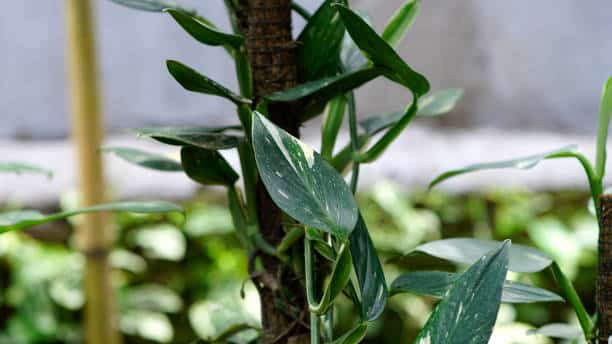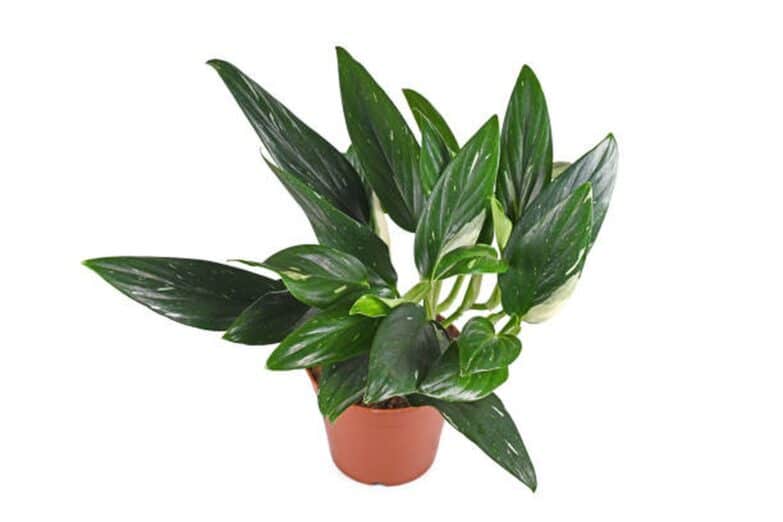Monstera Standleyana, also known as the ‘Cobra Monstera,’ is an exotic and visually striking houseplant. This beautiful plant, native to the rainforests of Central America, is cherished for its unique, variegated leaves that add a bold statement to any indoor green space. In this comprehensive guide, we’ll delve into the world of Monstera Standleyana, detailing its care requirements, common problems, propagation techniques, and much more.
Understanding Monstera Standleyana
Before embarking on the journey of caring for this stunning plant, it’s beneficial to understand its native conditions and unique characteristics.
Native Habitat and Characteristics
Monstera Standleyana is a tropical, climbing plant, native to the jungles of Central America. It’s known for its elongated, glossy leaves that showcase a mix of green, yellow, and cream variegation. The leaf pattern, combined with a growth pattern that has the plant “climbing” towards the light, results in a plant that can truly make a statement in a room.
Common Names and Varieties
This plant goes by many names, including the Five Holes Plant and Cobra Monstera. There are several variegated varieties, with the most common one being Monstera Standleyana ‘Albo Variegata,’ characterized by white or cream and green leaves.
Care Requirements for Monstera Standleyana
Proper care is crucial to keep your Monstera Standleyana healthy and beautiful. Let’s break down the care elements one by one.
Light
Monstera Standleyana thrives in bright, indirect light. Too much direct sunlight can scorch the leaves, while too little light can lead to a lack of variegation and stunted growth. East or north-facing windows are often ideal.
Temperature and Humidity
Being a tropical plant, Monstera Standleyana prefers a warm and humid environment. Aim for temperatures between 65°F and 80°F, and maintain high humidity levels by misting, using a humidifier, or placing the plant on a pebble tray filled with water.
Watering and Feeding
Proper watering and feeding can make a huge difference in the health of your Monstera Standleyana.
Watering
This plant prefers a ‘wait and dry’ approach to watering. Water thoroughly, then allow the top few inches of soil to dry out before watering again. Overwatering can lead to root rot, a common issue with many houseplants.
Fertilizing
Feed your Monstera Standleyana every month during the growing season (spring and summer) with a balanced, water-soluble fertilizer. Cut back on feeding during the fall and winter, when plant growth naturally slows down.
Pruning and Propagation

Pruning and propagation are integral parts of Monstera Standleyana care, allowing you to maintain your plant’s size and shape and multiply your collection.
Pruning
Pruning helps control the size of your Monstera Standleyana and encourages bushier growth. Always prune above a leaf node, and remove any yellow or brown leaves to maintain the plant’s health and appearance.
Propagation
Propagation of Monstera Standleyana can be done through stem cuttings. Cut a section of stem that includes at least one leaf and node. Place the cutting in water and wait for roots to develop before potting in soil.
Common Problems and Solutions
While generally a hardy plant, Monstera Standleyana can experience a few issues.
Yellow Leaves
Overwatering is often the culprit of yellow leaves. If you notice this issue, allow the plant to dry out before watering again and ensure your plant has proper drainage.
Lack of Variegation
If your Monstera Standleyana’s leaves are becoming more solid green, it might not be receiving enough light. Move your plant to a brighter location but remember to avoid direct sunlight.
Conclusion
Monstera Standleyana is an impressive, attractive houseplant that can add a touch of the tropics to your indoor space. Understanding its care requirements, propagation techniques, and common issues will ensure you can keep this plant healthy and thriving. Remember, patience and consistency are key, but with time and care, you’ll be rewarded with a stunning, vibrant plant that’s sure to be a conversation starter.

